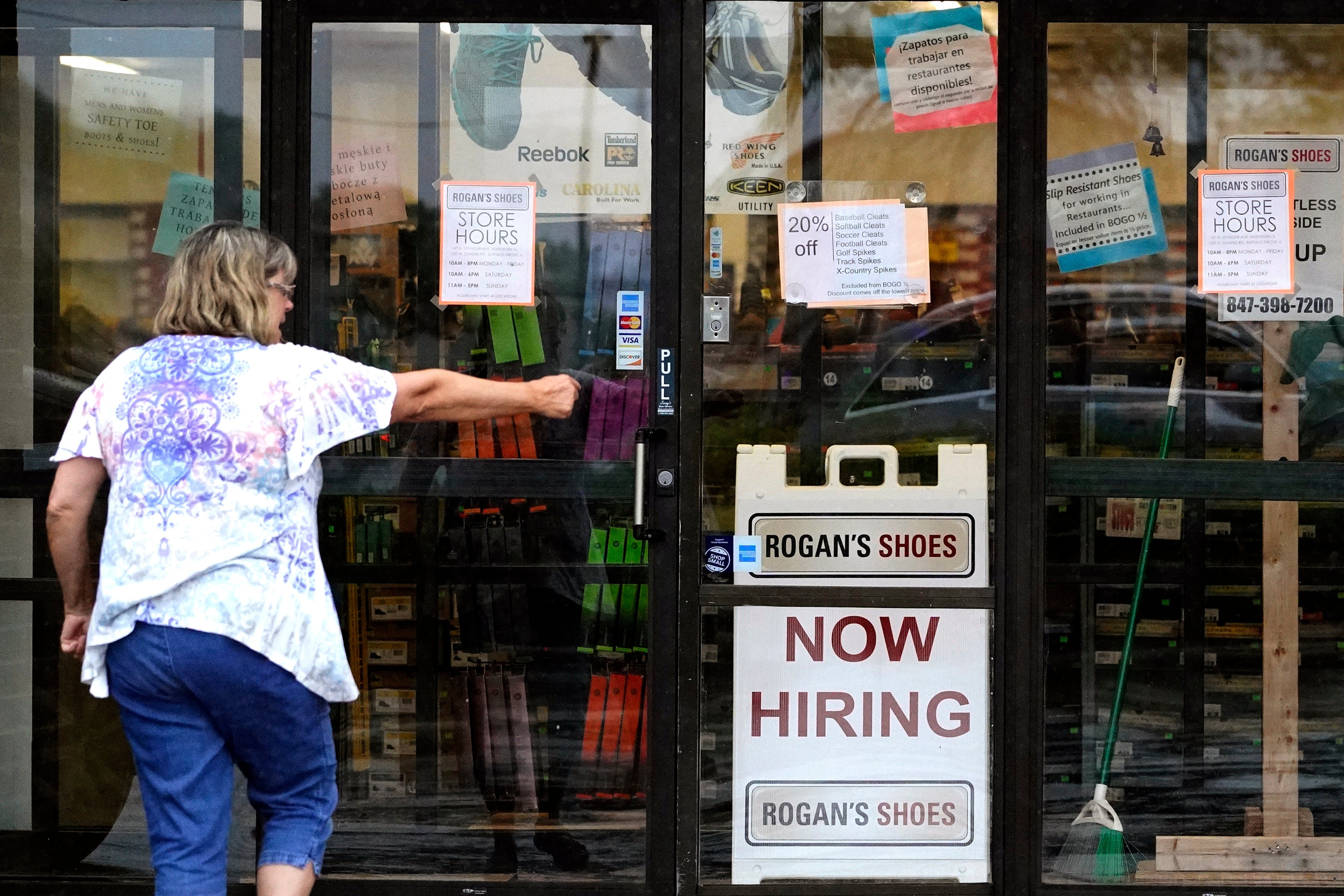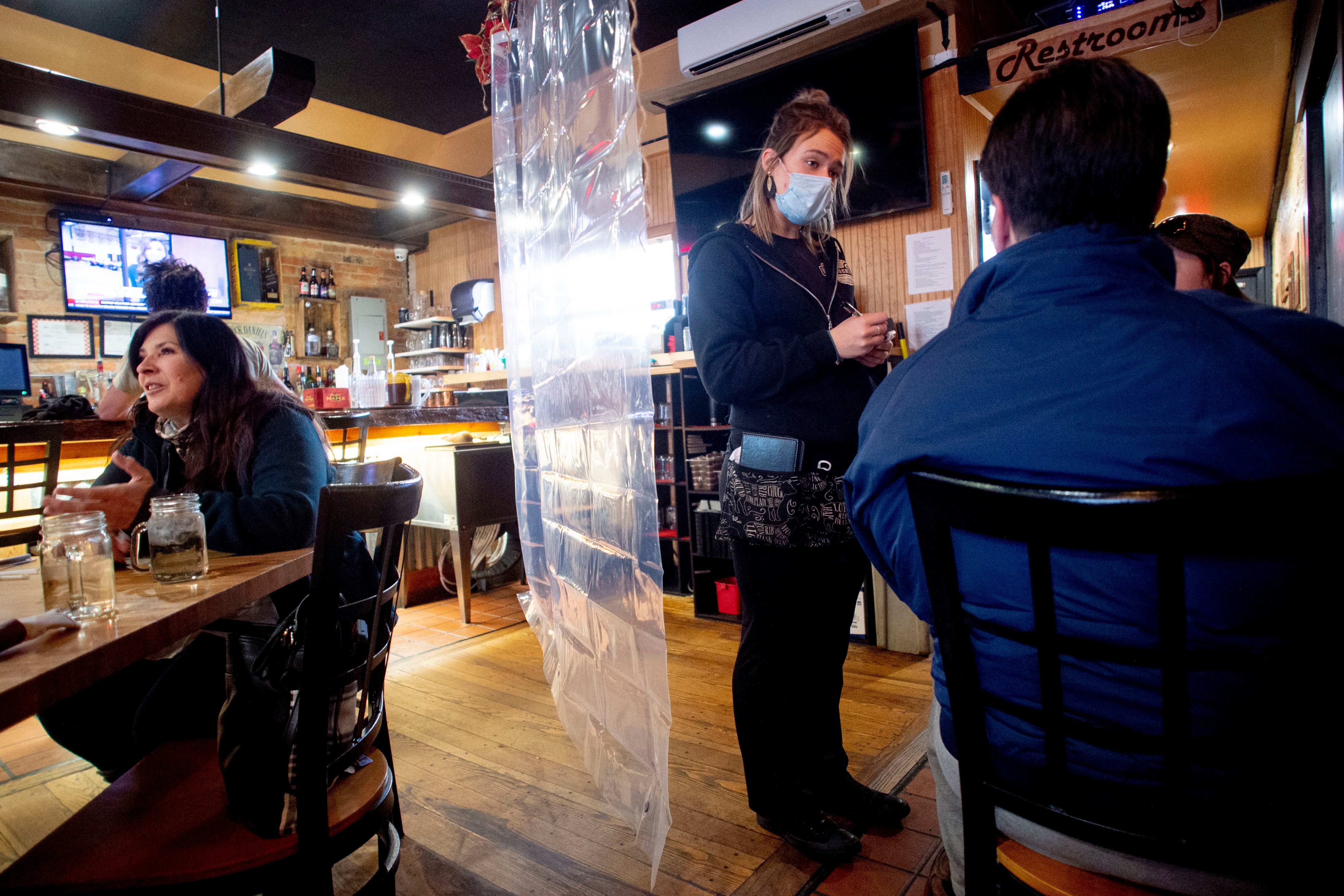The ‘crisis moment’ is here: Why women are quitting work for good
More than 300,000 women left the US labour market for good in September as the pandemic pushed many out of work and led others to take the leap, Rachel Sharp writes


Your support helps us to tell the story
From reproductive rights to climate change to Big Tech, The Independent is on the ground when the story is developing. Whether it's investigating the financials of Elon Musk's pro-Trump PAC or producing our latest documentary, 'The A Word', which shines a light on the American women fighting for reproductive rights, we know how important it is to parse out the facts from the messaging.
At such a critical moment in US history, we need reporters on the ground. Your donation allows us to keep sending journalists to speak to both sides of the story.
The Independent is trusted by Americans across the entire political spectrum. And unlike many other quality news outlets, we choose not to lock Americans out of our reporting and analysis with paywalls. We believe quality journalism should be available to everyone, paid for by those who can afford it.
Your support makes all the difference.September’s employment report was disappointing, to say the least.
Nearly 200,000 jobs were added to the US economy – all of them filled by men, a stark sign of the “crisis moment” many women are facing under the weight of relentless childcare and professional obligations this autumn, as the coronavirus pandemic lurches towards its two-year point.
Analysis by the National Women’s Law Centre (NWLC) showed that 309,000 women also exited the workforce entirely in September, marking the biggest drop since the previous September.
This nosedive also sent women’s participation in America’s labour force tumbling from 57.4 per cent in August to 57.1 per cent in September – well below pre-pandemic levels of 59.2 per cent in February 2020.
“Women’s participation in the labour force has fallen to its lowest rate since 1988,” Emily Martin, vice president of Workplace Justice at NWLC, tells The Independent. “So we’ve lost a whole generation of gains and 30 years of progress during the pandemic.”
Now there are fears that this week’s sudden abandonment of paid leave from US president Joe Biden’s sweeping infrastructure and spending plan could push this progress back even further.
Paid leave scrapped from ‘build back better’ plan
For the first time in US history, more than 100 million Americans had been poised to gain access to 12 weeks of paid time off when they become new parents.
As the only nation of all 38 Organization for Economic Cooperation and Development (OECD) members and one of just seven countries in the entire world that doesn’t provide paid leave to new mothers, this had been seen as a once-in-a-lifetime opportunity to finally bring the US in line with other western nations.
But 12 weeks suddenly dwindled to four weeks in an effort to appease Joe Manchin, a moderate Democrat senator.
Then, in a shock move, Mr Biden scrapped the policy altogether when he unveiled his new scaled-back plan on Thursday.

Reshma Saujani, founder of Girls Who Code and the Marshall Plan for Mums, calls its axing “shameful”.
“It’s a kick in the gut at a moment when you have millions of women already out of the workforce and when they have repeatedly said one of the main reasons they cannot work is because of a lack of paid leave,” she tells The Independent.
“We are at a crisis moment with the largest exodus of women leaving the workforce in the history of our nation and the fact that paid leave was the only thing on the chopping block and they couldn’t even do four weeks is a real gut puncher to women.”
Ms Saujani says the scrapping of paid leave is especially telling given it comes at a time when the pandemic has already cost women thousands of jobs.
“It is coming in the middle of the pandemic which women have borne the brunt of being pushed out of the workplace, into poverty, put at greater risk of domestic violence…,” she says. “And even then [the policy was cut], so what is it going to take?”
According to Christian Nunes, president of the National Organization for Women (Now), the pandemic has pushed women out of the US workforce in several ways.
Essential workers and hard-hit industries
“Lots of jobs in the service, retail and hospitality industries have been eliminated due to the pandemic,” Ms Nunes tells The Independent. “And these industries mainly hire women.”
A staggering four in 10 jobs lost in the year between February 2020 and February 2021 were in the leisure and hospitality industry, according to BLS data.
Women of colour have been especially impacted, the NWLC analysis found. A total of 7.3 per cent of Black women were unemployed last month, compared to 3.7 per cent of white women.
Historically, Black women are also in lower-paid jobs and took longer to recover from the Great Recession than other demographic groups.

Women – and especially women of colour – were also typically working in roles that were designated as essential during the pandemic from supermarket workers, to chemist pharmacists to nurses treating Covid-19 patients in the nation’s hospitals.
A New York Times analysis of jobs in April 2020 found that one in three jobs held by women was designated as essential. In essential health care, for example, 77 per cent of workers were women. This put them right on the frontline of the pandemic without the luxury of doing their jobs from the safety of their homes.
The ‘motherhood penalty’
Despite efforts to bridge the divide, women are still far more likely to be responsible for childcare and housework than men, Rachel Thomas, co-founder and chief executive of Lean In, tells The Independent.
And with schools closed for much of the year during the height of the pandemic, many women found themselves becoming full-time professionals and, to some extent, teachers for their children.
While it was a major challenge for all working mothers to juggle work with childcare and schooling, essential workers were faced with the added impossibility of being unable to stay home with their children.
“Everybody had more home and childcare responsibilities during the pandemic,” says Ms Thomas. “But women were doing markedly more and more.”
And so the “fragility” of the US childcare system became impossible to ignore during this time, says Ms Martin. “The pandemic exposed the already fragile systems that families and women rely on to enable them to work.”
Parents of a two-year-old expect to pay an average of $1,100 (£804) a month on childcare. Meanwhile, the US government spends an average of just $500 (£365) a year on the child.
Childcare centres closed during lockdowns and, as of September, the industry had lost 10 per cent of all jobs since the start of the pandemic making the limited, unaffordable childcare arrangements “even more inaccessible”, Ms Martin explains.

“While other countries have social safety nets, America has women,” she says, adding that “the entire economic system is built on the idea that women will self-sacrifice and stretch to make it work and in the past year and a half this has put many women in a position where it’s just not possible.”
As Ms Saujani explains, in a nation with no paid leave and a lack of affordable childcare, working mothers were on a “rickety shift to begin with”.
Pointing to the “motherhood penalty”, she says “mothers were holding on because they had to.”
Now, with the pandemic highlighting the gaping hole in the childcare system, a “crisis moment” has been reached, she adds.
Burnout in the corporate world
These challenges have left women tired – and the problem is also true of women working in the corporate world, says Ms Thomas.
The Women in the Workplace survey from Lean In and McKinsey and Co found that 42 per cent of women say they are burned out. This is compared to 35 per cent of men, with the gap widening between the two genders over the last year. In September 2020, 32 per cent of women and 28 per cent of men reported being burned out.
Ms Thomas says this burnout is not because women are “more frail” than men. “It’s really a story of women doing more – in the home and at work.”
She adds: “It’s a real risk that the corporate workplace will also start to lose women because of burnout as, at some point, it just becomes too much.”
Is it worth it?
The myriad of issues exacerbated for women by the pandemic appears to have left many pondering a crucial question: is it worth it?
“We’re almost at the two-year anniversary of Covid-19 and not much has changed,” says Ms Saujani. “Schools are still opening and closing, thousands of people are not vaccinated, many jobs haven’t come back and there hasn’t been retraining to get people in those industries into other work.”
For many women, this September seems to have been a turning point, explains Ms Nunes. “The fact September saw so many women leave the workforce shows the difficulty many are facing balancing the shift in caregiving arrangements as their children go back to school,” she says.
Most schools across the country returned to in-person learning this autumn but temporary closures and quarantines are still a regular occurrence. In New York City, 1,924 classrooms have closed between the semester starting on September 13 and October 28 due to Covid-19 cases, city data shows.
In Colorado, the entire Montezuma-Cortez school district sent a letter to all parents this week informing them that learning would be remote for almost two weeks.
“There is still an instability around whether children will stay in school. Also, the shift from one arrangement to another is also difficult because of the weaknesses in the caregiving infrastructure that Covid-19 revealed and exacerbated,” says Ms Nunes.

And other issues are putting women off work too. Not only were women in customer-facing jobs at greater risk of contracting the virus last year but now they are facing other challenges such as dealing with customers angry about mask mandates, says Ms Nunes.
“These customer service jobs have already been difficult for a long time in terms of trying to balance childcare with an unpredictable work schedule,” she says. “Now, women are questioning whether these low-quality jobs that don’t provide a decent income are actually worth it.
“Many women are facing the decision whether to keep looking for work or if stepping out of the workplace will better meet the needs of their families.”
The ‘Great Resignation’
In recent months, there has been a flurry of anecdotes about business owners struggling to hire low-income workers. Dubbed “The Great Resignation”, some workers appear to no longer be willing to work for low wages in jobs that don’t offer the flexibility they need.
The trend has forced the hand of several large employers in service industries; Walmart and Costco announced increases to their minimum wages recently.
As Ms Nunes puts it, the issue is two-fold: women are being forced out of work due to a loss of jobs in their industries and a lack of paid leave and childcare provisions, and women are also choosing not to take roles that are low-paid.
“Some women are making this choice to leave the workforce and some have no choice,” she says.
And without major legislative changes and investment, Ms Nunes warns that the events of the last year could damage women’s roles in the labour market and the wider economy long into the future.
She calls for a focus on several policies to help women stay in the workforce: raising the minimum wage, childcare investment, paid family leave, better pay and sexual harassment protections.
Hopes had been raised that a major step toward progress would come in the inclusion of paid leave in the “build back better” plan. As far as Ms Saujani is concerned, the backpedalling on this plan sends a message that the government has a “lack of respect for women”.
She adds: “The long-term impact of this is that it’s going to take longer and longer to get back to equality – we have worked so hard to show what women in the workforce looks like and to change the outdated notions of the workplace, and we are now rolling all of that back.”
Having women in the workforce is not a “nice to have”, she points out; it is crucial for women, families, business innovation, the economy and opportunities for future generations, she says.
With paid leave now off the table, Ms Saujani says: “It makes you feel that the US wants to keep these outdated gender roles.”



Join our commenting forum
Join thought-provoking conversations, follow other Independent readers and see their replies
Comments